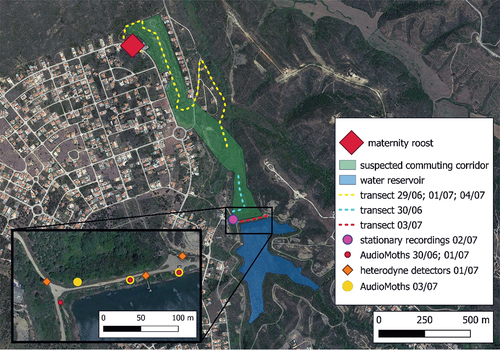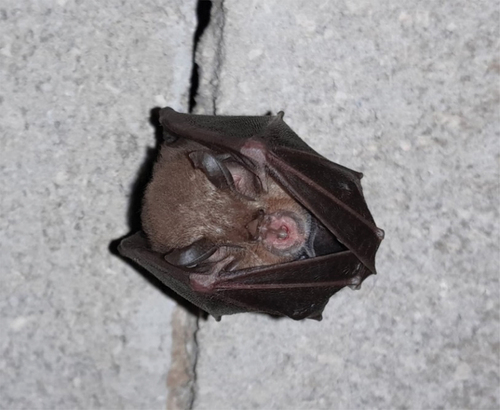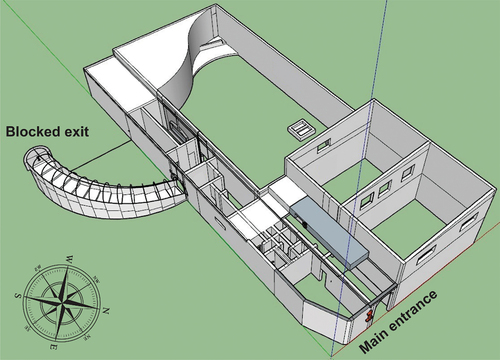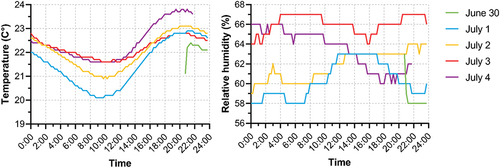Figures & data
Figure 2. Location of the maternity roost of lesser horseshoe bat (R. hipposideros), walking transect routes with ultrasound bat detectors and locations of their stationary recordings in Vale da Telha, Aljezur taken from June 29 to July 4, 2022.

Figure 3. Female of lesser horseshoe bat (R. hipposideros) with juvenile inside the maternity roost.

Table I. The results of bat counts during emergence and inside the roost.



